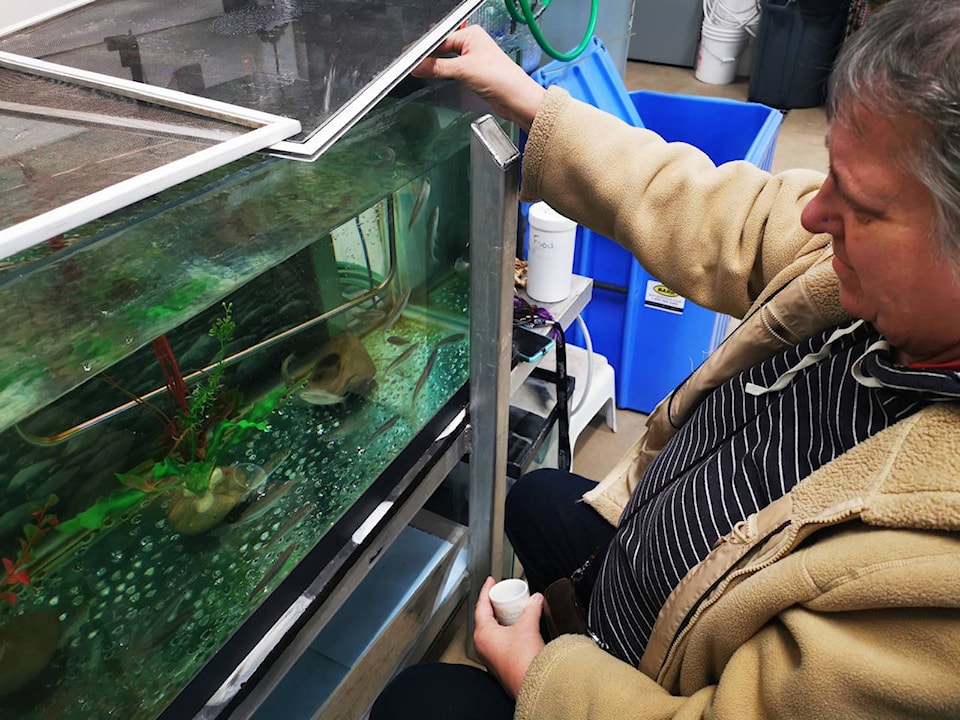Coho fry at the Buck Creek Canfor hatchery are continuing to thrive this winter.
“The coho are doing well and some of them are already swimming up and looking like real fish,” said Cindy Verbeek, the Houston-based northern project coordinator from A Rocha, the group that through the Upper Bulkley River Streamkeepers has developed the hatchery and nature centre.
Eggs were collected last fall and then fertilized with fry being the result.
The hatchery then releases fry in the late spring of each year.
Collecting eggs, fertilizing them and growing fry to release stage not only repopulates the watershed but the process also acts as a teaching tool for A Rocha on the importance of maintaining a healthy eco-system.
That education component will not increase thanks to an expansion that was completed just last month.
Volunteers provide a major assist at the hatchery and nature centre and there’s an opportunity coming up right now to take part.
“We will be asking for help to feed them every half hour during daylight hours to help them learn to feed,” said Verbeek of the fry.
One local resident who is already a key volunteer at the hatchery and nature centre is Phyllis Wiebe.
“Phyllis has been a part of every environmental initiative I have been involved in since I moved here 18 years ago,” said Verbeek.
“She was on the Green Team, recycling committee, part of the community garden (organized by Houston Link to Learning), farmer’s market and is now helping us feed the fish and collects recycling (bottles and cans) to raise money for the project as well as for the Cancer society,” she added.
While the hatchery concentrates on its coho fry, it is also the new home for Mabel, a red-eared slider turtle, that arrived around Christmas from a family who could no longer care for her because their life circumstances changed and was kept at Verbeek’s house until the nature centre expansion was completed.
“She will stay at the nature centre as a teaching tool about invasive species (don’t let your pets go in the wild) and helping people realize the commitment a turtle can be since they live to be 30-40 years,” said Verbeek.
“Unfortunately too many people make quick decisions and purchase exotic pets without realizing the special care they need and how long they will have to care for them. She is now in a tank that is three times the size she came to us in and I am doing my best to get her everything she needs to be healthy and happy.”
The nature centre was also involved in Literacy Week the end of January by preparing “Explore Outdoors” activity kits for families.
Ten families picked up kits as did Tanya Margerm’s kindergarten class.
